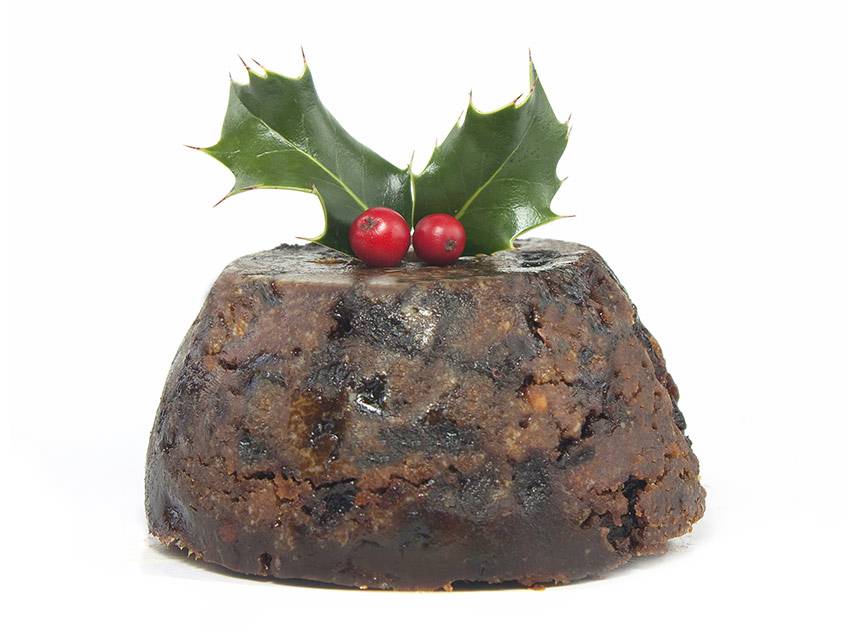Next Sunday, these words from the Book of Common Prayer will remind churchgoers that it’s time to make this year’s Christmas pudding.
Always read just before Advent, the words have long been associated with the dessert because most recipes call for several weeks of maturing before it is ready to eat.
The tradition of ‘stir-up Sunday’, the last before Advent, is that every member of the family lends a hand in the making.
Various practices have become a part of the process over the years, such as using 13 ingredients to represent Jesus and his disciples, and stirring from east to west in honour of the three wise men who visited Jesus in the stable.
In some households, everyone makes a wish for the year ahead while they stir, and silver coins or charms are folded into the mix.
Finding one in your piece of pud is a sign of good luck, which hopefully overrides the risk of choking or broken teeth.
Sadly, with a growing preference for ready-made alternatives, the tradition of ‘stir-up Sunday’ is going the same way as church attendance.
A recent survey showed two-thirds of British children have never stirred the heavy mixture.
This year, whether you’re planning to pass on a tradition, or establish a new one, a famous face is here to add another helping hand.
Whatever else you do, says celebrity chef James Tanner, don’t forget the Christmas spirit.
“You’ve got to put good booze in it,” he explained. “Let’s not be shy – it is Christmas after all! Some people use Cointreau, some brandy, some use whisky.
“I like brandy myself, or a nice cognac. That’s going to add to the flavour as well as providing that all important moisture.”
After you’ve chosen your liqueur, the next thing to do is choose what will soak it up.
“Recipes vary, and everyone has their favourites when it comes to fruit,” said James.
“People often want to use a quick method for stir-up Sunday, but if you can, it obviously helps to soak the fruit beforehand.
“Personally I like sultanas and apricots. They’re nice and plump and I find they really soak up the alcohol well.
“You can go old-school and use glace cherries – a lot of people grew up with those on the tops of cakes, and as well as nostalgia they can add some great colour when you cut into the pudding.”
James says recipes are made to be broken, and half the fun of making your own pudding is the freedom to make it how you want.
“Some people have a sure-fire family favourite. But you can tweak and play around,” he said.
“That’s what I like about it. I’ve seen puddings where people have used grated carrots, which is essentially a tweak on carrot cake.
“You can put dates in there to go with the fruit, you can try using muscovado sugar, soft brown sugar and other varieties. It all adds to a different kind of richness.”
James says the choice is also yours when it comes to spicing. Whether you opt for mixed spice, allspice or candied peel, don’t forget to add that vital kick to the mix.
For the truly adventurous, a further addition can be made, with the use of fruit not limited to the inclusion of apricots, currants, carrots and peel.
“Some people put a whole satsuma or an orange in the middle of their puddings,” said James.
“You need to get a fork and pierce it all over. An orange is firmer than a satsuma so will hold better.
“Once you’ve pierced it you put it in a very sugary mix of syrup to cook down. The orange oil comes out of the skin, and the syrup goes into the orange which softens it so it’s nowhere near as harsh.
“You can’t just slap an orange in there, it wouldn’t taste very nice!”
If you decide to make your own this year, whether to uphold tradition, or simply put your children and partner to work, why not get the whole family involved, whatever you put in the pudding.
THE ORIGINS OF CHRISTMAS PUDDING
Christmas pudding, or plum pudding, wasn’t always the dessert we know and love today.
It has two savoury forerunners; one was the world’s first ‘mince pie’, a mixture of cooked, shredded meat, dried fruits and alcohol, for its preservative qualities, encased in pastry.
These were winter fodder, as food was scarcer through the colder months.
Its second forerunner was a soup-like dish called pottage, a combination of meat, vegetables, fruits, sugar and spices served at the beginning of a meal.
As techniques for meat preserving improved in the 18th century, the savoury element of both the mince pie and the plum pottage diminished as the sweet content increased. The mince pie kept its name, though the pottage was increasingly referred to as plum pudding, with ‘plum’ meaning dried grape or raisin.








